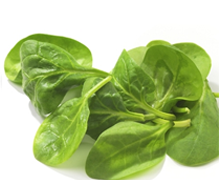
- Address : P.O. Box 11, Gannoruwa rd, Peradeniya, Sri Lanka
- E- Mail : director.hordi@doa.gov.lk
- Telephone :(+94) 081-2388011-12-13
- Fax :(+94) 081-2388234

sarana
Trianthema portulacastrum
Sarana is a fairly popular leafy vegetable. It is a very good diuretic. It cleans the kidneys and prevents the formation of stones.
Available Types
There are three types
- Stem greenish colour
- Stem light brown in color
- White sarana (medicinal type)
Climate requirements/ Areas suitable for cultivation
Soil
It needs well-drained soil.
Planting material
Mainly propagated by seeds. Seeds are formed in well matured plants. Once the seeds are mature, the seeds can be removed from the plant and separated. The crop can also be propagated by stems in home gardening.
Field preparation and planting
The field should be ploughed well and the soil should be finely prepared. Raised beds should be prepared in areas where drainage is poor. Seeds are sown in well prepared beds. When planting in home gardens, 6-9 inches long cuttings can be planted while 1-2 internodes are burring in the soil.
Fertilizer
Organic fertilizer
Well decomposed poultry manure is widely used. Cattle manure, compost, green manure etc. can also be used as organic fertilizers. Organic manure should be mixed into the soil about two days before sowing.
Chemical fertilizer
Requirement for 100m2 area
Fertilizer application | Urea kg. | TSP kg. | MOP kg. |
Basal Fertilizer | 1.0 | 1.5 | 1.0 |
Note 1: It is advisable to apply phosphorus and potassium as basic fertilizers after a soil test.
Water supply/ Irrigation
It is advisable to supply enough moisture for germination. It is important to irrigate the crop regularly even after germination. Watering is usually enough every 2-3 days. The soil should not be allowed to dry out.
Weed Control
Pest Management
Disease Management
Causal Organism: Albugo aquitica
Symptoms:
Chalk-white , cheesy, raised spore masses can be seen on the underside of the leaves
Management:
- Not recommended use sprinklers irrigation
- Fungicide can be applied only at highly needed situations
Harvesting
Within 20 days after sowing, the seedlings can be uprooted and bundled and sold at the market. If stem cuttings are planted, immature parts could be harvested and utilized.
Harvest
400 kg per 100 square meters. (400kg / 100m2)
